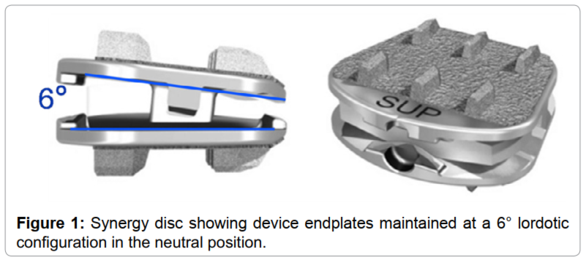
For cervical disc replacements to be comparable to the gold standard of cervical discectomy and fusion (ACDF), proper cervical alignment after disc replacement is imperative in preventing accelerated facet degeneration, excessive wear debris and axial neck pain. This study evaluated whether the Synergy Disc (artificial cervical disc replacement) could provide preservation and/or restoration of cervical alignment while normalizing kinematics and providing acceptable clinical outcomes. This is a prospective clinical study for an alignment correcting cervical disc replacement. The Synergy group was comprised of 37 consecutive patients (42 implants) with a minimum follow-up of 1 year (range 12-26 months) on 34 patients (39 implants). Quantitative motion analysis (QMA) software was used for kinematic outcome parameters: range of motion (ROM), horizontal translation, center of rotation (COR-X, Y), disc height (DH), disc and shell angle (DA and SA, respectively). Neck Disability Index (NDI) and Visual Analog Scale (VAS) were also assessed. At 18 months post-surgery, the average SA of the Synergy Disc was 6 ± 3° of lordosis. Pre-operative ROM, translation and COR X did not change significantly post-surgery. The Synergy Disc provided segmental lordosis at the surgical level, while maintaining pre-operative ROM, translation and COR X. There was a superior shift of COR Y following insertion of the device. The lordosis of 6 ± 3° provided by the Synergy Disc was comparable to the lordotic correction provided by an ACDF.

